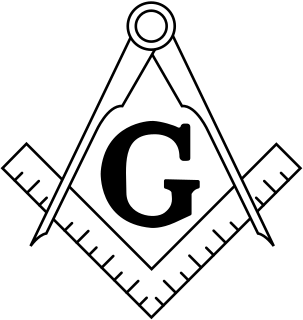
Mormonism is the predominant religious tradition of the Latter Day Saint movement of Restorationist Christianity started by Joseph Smith in Western New York in the 1820s and 30s.

Polygamy was practiced by leaders of The Church of Jesus Christ of Latter-day Saints for more than half of the 19th century, and practiced publicly from 1852 to 1890 by between 20 and 30 percent of Latter-day Saint families. Note that there are various denominations that are considered Mormons and they have different beliefs and practices.

Enfield is a town in Grafton County, New Hampshire, United States. The population was 4,582 at the 2010 census. The town includes the villages of Enfield, Enfield Center, Upper Shaker Village, Lower Shaker Village, Lockehaven, and Montcalm.

Maria Monk was a Canadian woman whose book Awful Disclosures of Maria Monk, or, The Hidden Secrets of a Nun’s Life in a Convent Exposed (1836) claimed to expose systematic sexual abuse of nuns and infanticide of the resulting children by Catholic priests in her convent in Montreal. The book became a best-seller.
In the Latter Day Saint movement, Heavenly Mother or the Mother in Heaven is the mother of human spirits and the wife of God the Father. Those who accept the Mother in Heaven doctrine trace its origins to Joseph Smith, the founder of the Latter Day Saint movement. The doctrine became more widely known after Smith's death in 1844.
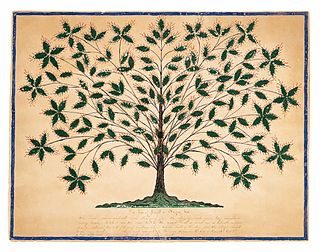
Ann Lee, commonly known as Mother Ann Lee, was the founding leader of the United Society of Believers in Christ's Second Appearing, or the Shakers.

The Ursuline Convent riots occurred August 11 and 12, 1834, in Charlestown, Massachusetts, near Boston, in what is now Somerville, Massachusetts. During the riot, a convent of Roman Catholic Ursuline nuns was burned down by a Protestant mob. The event was triggered by reported abuse of a member of the order, and was fueled by the rebirth of extreme anti-Catholic sentiment in antebellum New England.

Anti-Mormonism is discrimination, persecution, hostility or prejudice directed against the Latter Day Saint movement, particularly The Church of Jesus Christ of Latter-day Saints. The term is often used to describe people or literature that are critical of their adherents, institutions, or beliefs, or physical attacks against specific Saints or the Latter Day Saint movement as a whole.
Ex-Mormon or post-Mormon refers to a disaffiliate of The Church of Jesus Christ of Latter-day Saints or any of its schismatic breakoffs, collectively called "Mormonism". Ex-Mormons—sometimes referred to as exmo or postmo—may neither believe in nor affiliate with the LDS Church. In contrast, Jack Mormons may believe but do not affiliate; and cultural Mormons may or may not affiliate but do not believe in certain doctrines or practices of the institutional LDS Church. The distinction is important to a large segment of ex-Mormons, many of whom consider their decision to leave as morally compelling and socially risky. According to 2014 Pew data, around 1/3 of adults raised LDS no longer adhere to the faith(up from around 10% in the '70s and '80s) and in 2008 only 25% of LDS young adults are actively involved. Many ex-Mormons experience troubles with family members who still follow Mormon teachings. Aggregations of ex-Mormons may comprise a social movement.
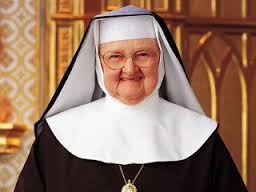
Mother Mary Angelica of the Annunciation, PCPA, also known as Mother Angelica, was a Catholic American Poor Clare nun best known for her television personality. She was also the founder of the internationally broadcast cable television network Eternal Word Television Network (EWTN) and the radio network WEWN. EWTN became a voice for Catholics worldwide.

Mary Marshall Dyer (1780-1867), was a voice for the largely forgotten Anti-Shakerism sentiment in rural New Hampshire. In 1813 she joined the Shakers of Enfield, New Hampshire. Disappointed in her lack of a leadership role and frustrated by the constraints of Shaker life, Dyer left the community in 1815. Her husband, Joseph, remained as did all five of the Dyer children. Mary Dyer accused the Shakers of alienating her from her children. Fearing for her children's safety and left without any means of financial support, she gave public talks and wrote tracts against the Shakers in an attempt to gain public, and legislative, support for her cause. Her principal writings included A Brief Statement of the Sufferings of Mary Dyer and A Portraiture of Shakerism in 1822. In 1819, she raised a mob to storm the Enfield Shaker Community to take her children back, but this effort failed. Joseph Dyer remained devoted to the community and criticized her in strong terms, responding in print to his wife's published accusations. Four of her five children remained Shakers for life. Her son, Jerrub, left the Shakers late in life, but did not appear to have a close relationship to his mother. By the 1850s Dyer's anti-Shakerism seemed extreme, in New England at least where the Shakers were now considered "quaint" rather than dangerous. Mary Dyer died a largely forgotten figure in 1867.
In some religious traditions or movements, Heavenly Mother is the wife or feminine counterpart of the Sky father or God the Father. Teachings about the Heavenly Mother are promulgated by various religious groups, to one degree or another.

The Book of Mormon witnesses are a group of contemporaries of Joseph Smith who claimed to have seen the golden plates from which Smith translated the Book of Mormon. The most significant witnesses are the Three Witnesses and the Eight Witnesses, all of whom allowed their names to be used on two separate statements included with the Book of Mormon. Each of the witnesses never denied what they saw.
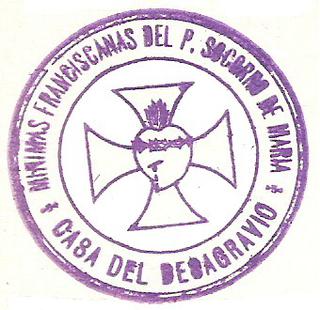
The Order of Atonement of the Franciscan Minims of the Perpetual Help of Mary (mfPS) is a single Roman Catholic active/contemplative religious order distinguished by three Branches: the Men's Branch for Priests and Brothers/Friars, the Women's Branch for Nuns and the Lay Branch for those of all ages and professions, including the sick, dying, and those children conceived but as yet "unborn" or "pre-born".

Luther's Marian theology is derived from his views of Mary, the mother of Jesus. It was developed out of the deep Christian Marian devotion on which he was reared, and it was subsequently clarified as part of his mature Christocentric theology and piety. Lutherans hold Mary in high esteem. Martin Luther dogmatically asserted what he considered firmly established biblical doctrines like the divine motherhood of Mary while adhering to pious opinions of the Immaculate Conception and the perpetual virginity of Mary along with the caveat that all doctrine and piety should exalt and not diminish the person and work of Jesus Christ. By the end of Luther's theological development, his emphasis was always placed on Mary as merely a receiver of God's love and favor. His opposition to regarding Mary as a mediatrix of intercession or redemption was part of his greater and more extensive opposition to the belief that the merits of the saints could be added to those of Jesus Christ to save humanity.
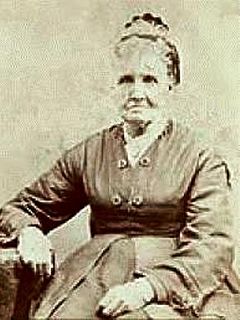
Sarah Marinda Bates Pratt was the first wife of LDS Apostle and polygamist Orson Pratt and later a critic of Mormon polygamy. She was a founder of the Anti-Polygamy Society in Salt Lake City and called herself a Mormon apostate. She was born in Henderson, Jefferson County, New York, the first daughter and third child of Cyrus Bates and Lydia Harrington Bates.

The early chronology of Shakers is a list of important events pertaining to the early history Shakers, a denomination of Christianity. Millenarians who believe that their founder, Ann Lee, experienced the Second Coming of Jesus Christ, the Shakers practice celibacy, confession of sin, communalism, ecstatic worship, pacifism, and egalitarianism. This list cover the periods from 1747 to 1836. This spans the emergence of denomination in the mid-18th century, the emigration of the Shakers to New York on the eve of the American Revolution, and subsequent missionary work and the establishment of nineteen major planned communities.

María Concepción of the Nativity and the Perpetual Help of Mary is the religious name of the Reverend Mother Foundress of The Order of Atonement of the Franciscan Minims of the Perpetual Help of Mary (mfPS) which she founded on June 24, 1942 in Zamora, Michoacan, Mexico.




